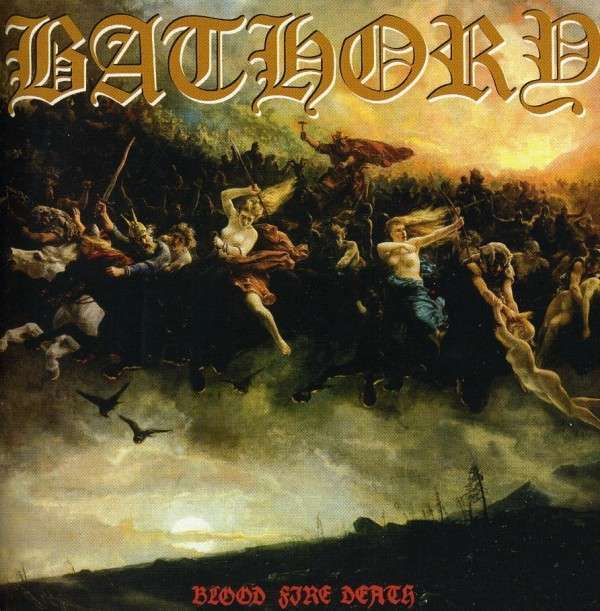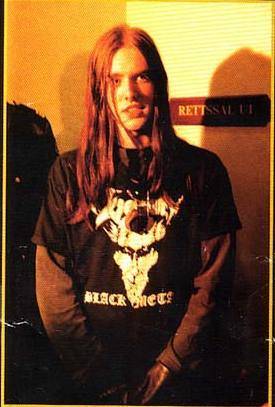Revival of Nordic Consciousness in Metal Music
Heavy metal music has been strongly associated with devil-worship and a fetish for all things ‘evil’, but since the 1990s a new current has risen from the North. Scandinavia, particularly Norway, is the cradle of the most extreme form of metal called Black Metal. Black Metal in turn has given birth to the phenomenon of Viking metal. This moniker is not only a testament to its Scandinavian roots but also for its overtly Germanic themes.
The first band to herald the age of Viking metal was the Swedish band Bathory (1983–2004) with its release of the album Hammerheart in 1990. It was musically a departure from the raw Thrash metal and adopted a more epic/atmospheric sound. The lyrics (in English) were about Vikings and Nordic mythology. The following video, “One Rode to Asa Bay,” has nearly 2.4 million views on You Tube.
httpv://www.youtube.com/watch?v=hDpc-831GPs&feature=related
In the mid 1990s a new generation of Viking metal emerged with the pioneering Norwegian band Enslaved (1991–present). Enslaved is undoubtedly rooted in Norwegian Black Metal, which forms the basis of its sound/vocals. It was nevertheless a Viking Metal band from the very beginning—adopting Nordic mythology in the lyrics and even singing in Old Norse. The album Frost (1994) heralded their breakthrough in the Metal scene with the song Frost/Loke as its blasting introduction. Another more recent song which includes folk instruments and vocals is Sigmundskvadet from the album Monumension (2001).
During the time Enslaved was coming of age Satyr, the leader of the Norwegian Black Metal band Satyricon, began an interesting but temporary side-project called Storm (1993–1995). Satyr reshaped Norwegian folksongs in metal-style and compiled them into an album called Nordavind (1995) with Mellom bakkar og berg as its most resounding song. Storm caused some stir in leftist circles as being too nationalist because the Norwegian flag was printed on the CD and because of the nationalist salutations (‘Hill Nordmenner!’ [Hail Norsemen!]).
While Storm was dancing on the edge of political correctness, Burzum (1991–1999, 2009–present), emerged as overtly racialist. Burzum is a one-man project of the Norwegian Varg Vikernes which began as a Black Metal artist and evolved into dark ambient music with lyrics referring to Nordic mythology. Vikernes resorted to church burnings as a revenge for the Christianization of Norway and was ultimately jailed for killing a leftist fellow Black Metaller. In prison he has continued preaching National-Socialism on his website Burzum.org.
Going back to Storm, we can conclude in hindsight that the mid 1990s was the starting point of Viking metal. It goes too far beyond this modest article to name and describe them all. The most important feature they have in common is that they make a distinct kind of music which is geographically confined to the Germanic world and which exalts Nordic history and culture.
Viking metal has also resulted in the production of very good video clips which makes the music more appealing. Týr (1998–present) from the Faroe Islands is a good example of a Viking metal band which adopts a mix of local folk songs, Nordic mythology and Viking scenes in videoclips, like Regin Smiður, Ormurin Langi (original folk song here) and Sinklars Visa. They record their Viking songs largely in their native tongue, probably the language closest to what Vikings spoke when they ruled the waves 1000 years ago.
In the 2000s Viking metal has also spread beyond Scandinavia into Germany, where Menhir (1995–present) is the best of its genre. Menhir has developed a more specific ‘South-Germanic’ brand of Viking metal with German history and lyrics. The band is not only a musical project but is also heavily involved in re-enactment of German history. Their latest album Hildebrandslied (2007) has also resulted in a videoclip of the main song Hildebrandslied, an ancient German heroic song which is sung in Old German, in which the band members appear as Germanic warriors depicting the saga of Hildebrand.
Although Viking metal is not a widespread phenomenon, it has proven its survival and vitality as a subculture within the wider heavy metal scene. This subculture is implicitly White; concerts are virtually all-White events and the themes are certainly not the sort of thing that would appeal to Muslims or Jews. (Incidentally, this deep national consciousness tapped into by Viking metal is more or less missing in America. This is the main reason why revolution is likely to begin in Europe.)
This kind of music has done more to advance the cause of Nordic awareness than all the books written about this topic. It values ancient songs and themes and at the same time can compete with shallow mainstream music, which is dominated by minorities. Although overtly political themes are lacking, Viking metal is a subculture which is creative and appealing to young people and raises the awareness of Nordic culture and history.







Comments are closed.